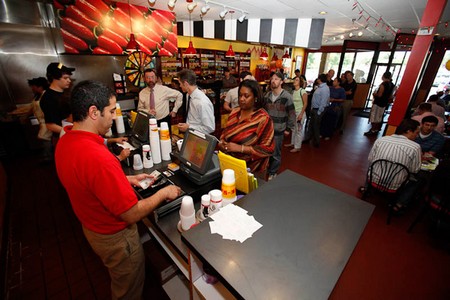The launch of the British Franchise Association (BFA) was the single most important event in the history of franchising in this country. Despite relatively modest resources, the BFA has steadily emerged as a powerful and respected mouthpiece and given the franchise industry a sense of identity.
It may seem rather odd that a range of companies, involved in such a diverse mixture of activities, should see themselves as being in the same ‘industry’. However, this merely underlines the fact that their similarities outweigh their differences, their principal point of similarity being their distribution format.
The franchise industry, more than almost any other, still appears astonishingly vulnerable to isolated misfortune. A single failure is capable of shaking the public image and composure of the entire industry. Only last year, the shock collapse of the Young’s Franchise Group (previously one of the darlings of the industry) and the bad publicity attracted by its La Mama operation, cast a cloud over the industry which has only recently been replaced by the atmosphere of self-confidence due to an industry of its size and importance.
But even bad news can have positive spin-offs. One of the key driving forces behind the BFA’s initial formation was the goal of self-regulation rather than political intervention and stifling legislation. Bad publicity last year, and the renewed threat of legislation, put the BFA on its mettle. The result was an updated and extended Code of Ethics.
This embraces a new arbitration service for the resolution of franchisor-franchisee disagreements, new disclosure obligations laid upon franchisors for the benefit of prospective franchisees, plus new guidelines concerning the interests of franchisees in the event of breach of contract or death. Termination of BFA membership is a sanction held over companies for serious transgressions of the new code.
Figures issued recently by the BFA indicate a slight fall in the number of franchises in Britain during the last few months of 1987 but this appears to be nothing more than a temporary consolidation. The actual number of operating outlets grew by 20 per cent during this period and turnover by 40 per cent to £3.1 billion. The industry now claims the equivalent of 145,000 full-time jobs.
In addition, franchising, so long concentrated in the southeast, is now breaking out and becoming more strongly represented in other parts of Britain. Business services, leisure and home fixture franchises appear to be setting the pace here Areas tipped for rapid expansion generally are services to business, fast food, health and beauty products/services, plus leisure related activities.
One recurring question never far from the agenda of any discussion of franchising is survival rates. Is running a franchise outlet safer than running a conventional small business? The answer is that franchising should be safer and usually is. Thereafter, the situation is not totally clear but a picture is at last beginning to emerge.
First, the percentage failure rate among franchisees can be expected to be generally lower than among franchisors. This is because the franchise systems at greatest risk are those at an embryonic stage of development with few franchisees. Those least likely to fail are the larger established systems with most franchisees.
Second, it is still not possible to state a once-and-for-all failure rate for the industry as a whole. What we have is a range of risk profiles for different parts of the industry, ranging from low among the franchising ‘establishment’ (which is where much of the clearing banks’ money is invested) to high around the industry periphery. Using a very general definition of franchising yields a total of around 400 franchises with an annual systems failure rate of around 12 to 14 per cent. A more exclusive definition brings the population of franchises down to around 250 and the failure rate to 4 to 7 per cent.
Making sense of the situation on franchisee failures is even more difficult since American experience suggests that individual failures are often disguised by outlets changing hands. However, an educated estimate, based on the statistics currently available, would put the annual failure rate in the region of 5 to 7 per cent, again based on a franchise population figure of 250.
The growth in franchising, between now and the end of the century, is likely to be parallelled by a growing professionalism within the industry. The BFA, for its part, has come of age and now possesses the credibility and stature to plot the future course of the industry, set guidelines, and police them. It is also becoming increasingly aware of the importance of public relations and political connections.
The growing sphere of influence of the franchise industry is also evident from the ‘affiliate listing’ in the BFA’s membership documentation. It currently includes (in addition to over 100 full members and associates), eight clearing banks, nine leading firms of accountants and 10 firms of solicitors. In addition, there is now a Franchise Consultants Association, set up, among other things, to weed out people taking commissions simply on the sale of franchises to prospective franchises. British franchising now appears set to make a substantial impact on the British economy in the years up to the end of this century and beyond.

